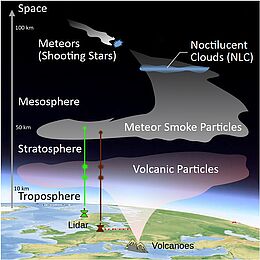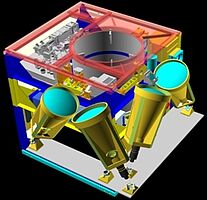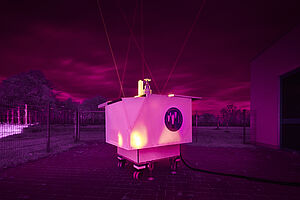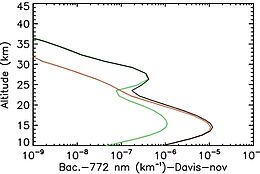Project description O-MSP-Li
Observations of Meteor Smoke Particles in the Middle Atmosphere with a Novel Lidar Method
Scientific goal of O-MSP-Li
Meteor smoke particles (MSP) are an important factor in physical and chemical processes in the stratosphere. However, little is known about the fundamental aspects of these particles such as where they occur, what is there seasonal distribution, and how they differ from other particles in the so-called Junge layer (15-25 km above ground). The project aims to fill some of these research gaps by testing a newly developed lidar technique in combination with other existing methods.
Partners
- Leibniz Institute of Atmospheric Physics (IAP): Dr. Gerd Baumgarten, Dr. Ronald Eixmann
- University of Greifswald (UG): Prof. Dr. Christian von Savigny
Funding and Duration
- Duration: 2023-2026
- Deutsche Forschungsgemeinschaft (DFG), Funding amount: 310.550 Euro
Background on Meteor Smoke Particles
Up to 100 tons of meteoroid debris and cosmic dust fall into the Earth's atmosphere every day. Most of it evaporates in the upper atmosphere, leaving behind meteor smoke particles: nanometer-sized particles of various shapes and chemical compositions. MSP fall into the stratosphere, particularly in winter, and combine with sulfate particles such as volcanic aerosols. Using conventional lidar methods and satellite measurements, meteor smoke particles are difficult to detect and distinguish from other atmospheric constituents. Their aerosol/Rayleigh backscatter ratio is only about 10-4.
The study of meteor smoke particles has the potential to provide essential insights into the interaction of the different atmospheric layers as well as the significance of these tiny particles on climate change. For instance, MSP are fundamental for the formation of noctilucent clouds. This celestial phenomenon, originally found only in the polar regions, can now be seen in our latitudes in summer. This can be interpreted as a warning signal for global warming.
Research Topics of O-MSP-Li
1. Unique lidar measurements in Norway (Andøya Island, 69° N) and Antarctica (Davis Station, 69° S) allow us to track how meteor smoke particles descend into the stratosphere in the polar vortices. Until now, lidar measurements of aerosols above the Junge layer have not been possible..
Fig. 1: Particles in the atmosphere above the troposphere are shown. When meteors enter the atmosphere, they evaporate at an altitude of about 100 km, forming meteor smoke particles. These particles descend into the stratosphere and mix with volcanic particles from the Earth's surface. Lidar instruments are used to measure these climate-relevant particles. © IAP
2. Using lidar observations, we will validate historical and present satellite measurements of meteor smoke particles. This will quantify how accurately MSP can be measured using satellites.
3. We will significantly improve the lidar measurements of MSP by adding a depolarisation measurement, allowing for characterisation of the particle shape and composition. For this purpose, we use the novel VAHCOLI (Vertical And Horizontal COverage by Lidar) lidar system in the polar region. With VAHCOLI meteor smoke particles can be identified in the upper stratosphere and lower mesosphere. We compare the new VAHCOLI measurements with the IAP's ALOMAR multicolor lidar. ALOMAR uses an established method for stratospheric aerosol observations that detects particle size and number density.
Fig. 2: Overview of a single VAHCOLI-unit from the network. The lidar contains a large vertical locking telescope and is integrated into a 1x1x1 m housing. With 4 additional telescopes, it is possible to perform Doppler aerosol measurements simultaneously in 5 different directions (left: overview with openSCAD, right: during the measurement).
4. We test the validity of the Whole Atmosphere Community Climate Model (WACCM) for the properties of meteor smoke particles by comparing the results of all available measurements with model simulations.
















